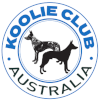Excerpts from “Herding Dogs Their Origins and Development in Britain” by Iris Combe
Published 1987
Chapter 12
– The Collie of Ireland
Until recent times cattle have been of more importance than sheep in the Irish livestock market, but the collie has always been a versatile farm dog. It is from the history of the Celts in Ireland that I have been able to trace what are possibly the most ancient herding dogs in the British Isles.
Three distinct Celtic groups occupied Ireland between the fifth and first centuries BC. The Cruthins arrived prior to 500BC, followed by the Erainns and the Goidils. Each group live in isolated communities but spoke a common Gaelic dialect, which was known as ‘Q Celtic’, from which the word collie, meaning ‘useful’, is derived.…their herds and flocks were small, but it is known that specially trained dogs were kept to ward off attempts by wild animals to attack the lone herdsman and his stock while grazing, or the farmer tilling his land. These dogs were probably descended from those used by the Basque Celts, for they were of medium height with lithe, athletic bodies covered by a dense, harsh coat usually brindle in colour.
When the Goidil Celts made their way over to the Western Isles of Scotland, history …. gives no information on the state of agriculture or livestock. Later, however, as Christianity spread, so too did the use of a trained dog to help with livestock farming.
When the monks from Ireland founded the monasteries on the outer islands of Scotland and ran farms to supply the daily necessities of life, they brought with them their own livestock and the labour to look after them…. These monks fully appreciated the value of a well-trained dog for whatever purpose. So for the first time the true ‘collie’ arrived in Scotland from Ireland.
Viking influence was also a force to be reckoned with in Ireland as elsewhere, and in the provinces of Ulster, Munster and Connaught a type of pastoral dog has existed for centuries similar in size and build to those found in Scotland, thought by some to have been brought by the Vikings as guards for the herds and flocks. They were usually black and tan or sand coloured with white or brindle markings, and rough or smooth coated. In character they were aloof and apprehensive, but loyal, trustworthy and intelligent.
In the province of Leinster, particularly in Co. Wicklow, is found a pure strain similar in appearance to a modern border collie, though slightly larger. Long ago they were born either with a natural bob or stumpy tail. Originally they were mainly red and white in colour or red merle, sometimes black and white, or an attractive sable or sandy colour with black points….
They are plain workers with not much ‘eye’ and inclined to be noisy, but they are powerful with large numbers of sheep and very useful stock or yard dogs.
From customs records it appears that a few sheepdogs arrived in Ireland with the merino sheep from Spain and Portugal in the early part of the eighteenth century. The sheep from that area were being exported all over the world to effect improvement in local breeds….
Another type is the Iberian strain, as it was known, and which is thought by some to have been brought to the Irish monastery farms by monks returning from Spain and Portugal….
A number of Irish collies were taken to Australia, but it is not known from which strain, and little is known of their progress out there. Then we find an Iberian strain of pastoral dog turning up in America under the name of the Australian bob or shepherd. Such a breed has not been heard of in that part of the globe, but then this is an Irish tale!
….In the sheep-rearing districts, particularly Galway and Roscommon, these new merinos and one or two breeds imported from England improved the quality of both fleece and flesh. It would appear from early farming history that this improvement took place over a period of about 100 years, and during this time the imported dogs, by now called by the Gaelic name of collie, became a strain of useful farm dog and were being bred as carefully as the Irish greyhound or Connemara pony….
When sheep or wool in England became scarce due to some local disaster or disease,…then graziers and market dealers went to the fairs in Ireland where livestock was cheaper and all were impressed with the strength and beauty of the collies they saw both at the fairs and working in the fields.
By the beginning of the nineteenth century, the Iberian strain had been crossed with Scottish dogs and the results were seen working on almost every farm in Ireland and with all types of livestock…. Most of the collies on Irish farms today are of the border collie type, but on a few isolated farms in west Galway and Co. Clare one or two Irish collies can still be found….
